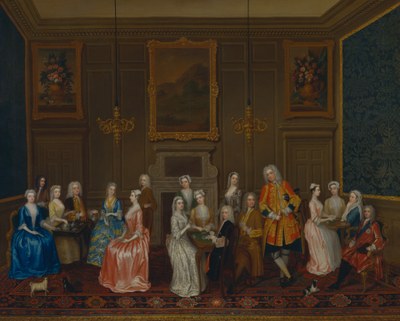Charles Philips (1708–1747), Tea Party at Lord Harrington's House, St. James, 1730

Beginning in the mid-17th century, tea became a prized commodity among the English aristocracy. It replaced coffee, which was consumed by ever broader sections of the population and thus could no longer serve as a status marker. Only during the following centuries, however, did tea become a universally popular beverage throughout the British Isles, displacing the ale which was drunk both morning and night.
Charles Philips (1708–1747), Tea Party at Lord Harrington's House, St. James's, oil on canvas, 102,2 cm x 126,4 cm, 1730; source: Yale Center for British Art, Paul Mellon Collection, Accession Number: B1981.25.503, http://collections.britishart.yale.edu/vufind/Record/1671864, public domain.